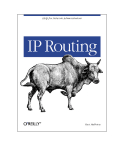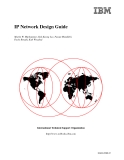Tài liệu Thư viện số
- Công nghệ thông tin (2019 )
- Điện tử viễn thông (1133 )
- Quản trị kinh doanh (1305 )
- Kế toán (1003 )
- Môi trường (968 )
- Du lịch (861 )
- Kiến trúc (424 )
- Xây dựng (1082 )
- Ngoại ngữ (302 )
- Y dược (1391 )
- Khoa học tự nhiên (874 )
- Khoa học xã hội (514 )
- Lý luận chính trị (573 )
- Sau đại học (243 )
- Tài liệu tham khảo khác (252 )
Danh mục TaiLieu.VN
- Mẫu Slide Powerpoint
- Luận Văn - Báo Cáo (344720)
- Kinh Doanh Marketing (65512)
- Kinh Tế - Quản Lý (48934)
- Tài Chính - Ngân Hàng (55898)
- Công Nghệ Thông Tin (142209)
- Tiếng Anh - Ngoại Ngữ (47066)
- Kỹ Thuật - Công Nghệ (134345)
- Khoa Học Tự Nhiên (107174)
- Khoa Học Xã Hội (82451)
- Văn Hoá - Nghệ Thuật (54408)
- Y Tế - Sức Khoẻ (173915)
- Nông - Lâm - Ngư (62504)
- Kỹ Năng Mềm (29016)
- Biểu Mẫu - Văn Bản (27610)
- Giải Trí - Thư Giãn (51994)
- Văn Bản Luật (198854)
- Tài Liệu Phổ Thông (402015)
- Trắc Nghiệm Online (213578)
- Trắc Nghiệm MBTI
- Trắc Nghiệm Holland
IP Routing
Ants, single-celled creatures such as the cellular slime mold, plants and animals in ecosystems, and (even) human beings can congregate and display miraculously complex behaviors.* Say a colony of ants in a tree needs to move to another tree, perhaps in search of food. Some ants build a bridge by joining their bodies in a chain stretching
from one limb in one tree to another limb in another tree. Other ants cross over this ant structure, walking over their peers. Once all the ants have crossed over, the ants in the bridge begin to gracefully undo the structure, crossing one by one. Each ant only repeats simple actions, over and over again; the net result of thousands of
ants working together is the miracle of the bridge, which allows the ant colony to migrate. In our own human society we hope to emulate this level of cooperation. Each one of us is useful to others in some way: we write, lay bricks, act in the theater, farm, drive buses, repair helicopters, tend to the sick, make coffee... As individuals, we repeat the same acts again and again, whether it be making coffee cup after coffee cup or seeing
patient after patient. The net result of all these acts is our complex, wonderful society. So, what does all this have to do with IP routing? Each router in a network repeats simple processes over and over again, as described in the specification of the routing protocol it is executing. The net result of all the routers in a network repeating these simple processes is IP routing, or the movement of IP packets in a network. My advice to you, the student of IP routing, is this: study the simple behaviors of each ant, and make sure you understand them in detail. There is no other way to understand how IP networks behave as ordered organisms.
from one limb in one tree to another limb in another tree. Other ants cross over this ant structure, walking over their peers. Once all the ants have crossed over, the ants in the bridge begin to gracefully undo the structure, crossing one by one. Each ant only repeats simple actions, over and over again; the net result of thousands of
ants working together is the miracle of the bridge, which allows the ant colony to migrate. In our own human society we hope to emulate this level of cooperation. Each one of us is useful to others in some way: we write, lay bricks, act in the theater, farm, drive buses, repair helicopters, tend to the sick, make coffee... As individuals, we repeat the same acts again and again, whether it be making coffee cup after coffee cup or seeing
patient after patient. The net result of all these acts is our complex, wonderful society. So, what does all this have to do with IP routing? Each router in a network repeats simple processes over and over again, as described in the specification of the routing protocol it is executing. The net result of all the routers in a network repeating these simple processes is IP routing, or the movement of IP packets in a network. My advice to you, the student of IP routing, is this: study the simple behaviors of each ant, and make sure you understand them in detail. There is no other way to understand how IP networks behave as ordered organisms.
Từ khóa: IP Routing, routing protocol, IP networks, công nghệ mạng, kỹ thuật mạng, khoa học công nghệ
234 p trinh 10/11/2012 170 1



